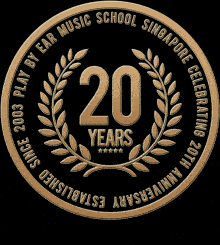Classical music generally refers to music composed long ago before the 1900s. In manuscripts and through documented history, we learnt about great composers such as Bach, Beethoven, Mozart, etc. During the classical era, music was considered a ‘serious’ form of art rather than a hobby. There were no parodies nor cover versions, much less improvisation of any sort. Every piece of music was carefully pre-written, pre-arranged and performed in a fashion that is very ceremonial and formal.
Fast forward to today, for someone studying Classical music, there is no real necessity to learn how to improvise or to play by ear. As one has to adhere religiously to the Classical manuscripts, it would be unethical to improvise a Classical piece of music.
Sometime around 1917, Jazz was born in New Orleans. As Jazz continued to evolve over the new century, Jazz is now arguably the highest level in terms of musicality due to complex syncopated rhythms and extended chords. Musicians could gather together and collaborate freely without the need for preset rhythms, chord progressions or arrangements. Some of the earlier Jazz legends include Louis Armstrong, Bill Evans and Thelonious Monk.
In 1960, Pop was born. Music was again transformed and further simplified when Beatles (the band) emerged into the scene and invented Pop (as a genre) for the first time. Music was suddenly for everyone. Pop music continued to evolve with technology, creating genres such as rock, metal, and electronic music to name a few. Not surprisingly, hipsters found the connection between music and videos, and MTV was born. Along came the rise of Michael Jackson, the phenomenon who was crowned the king of pop. Finally, the globalization of music spawned a huge diversity in genres and play-styles such as Mando-Pop, J-Pop, K-Pop, etc. Musicians often re-arrange existing songs and perform cover songs from other artistes. Unlike music from the Classical era, music is no longer as ‘serious’ or ‘formal’ as it was deemed to be.

